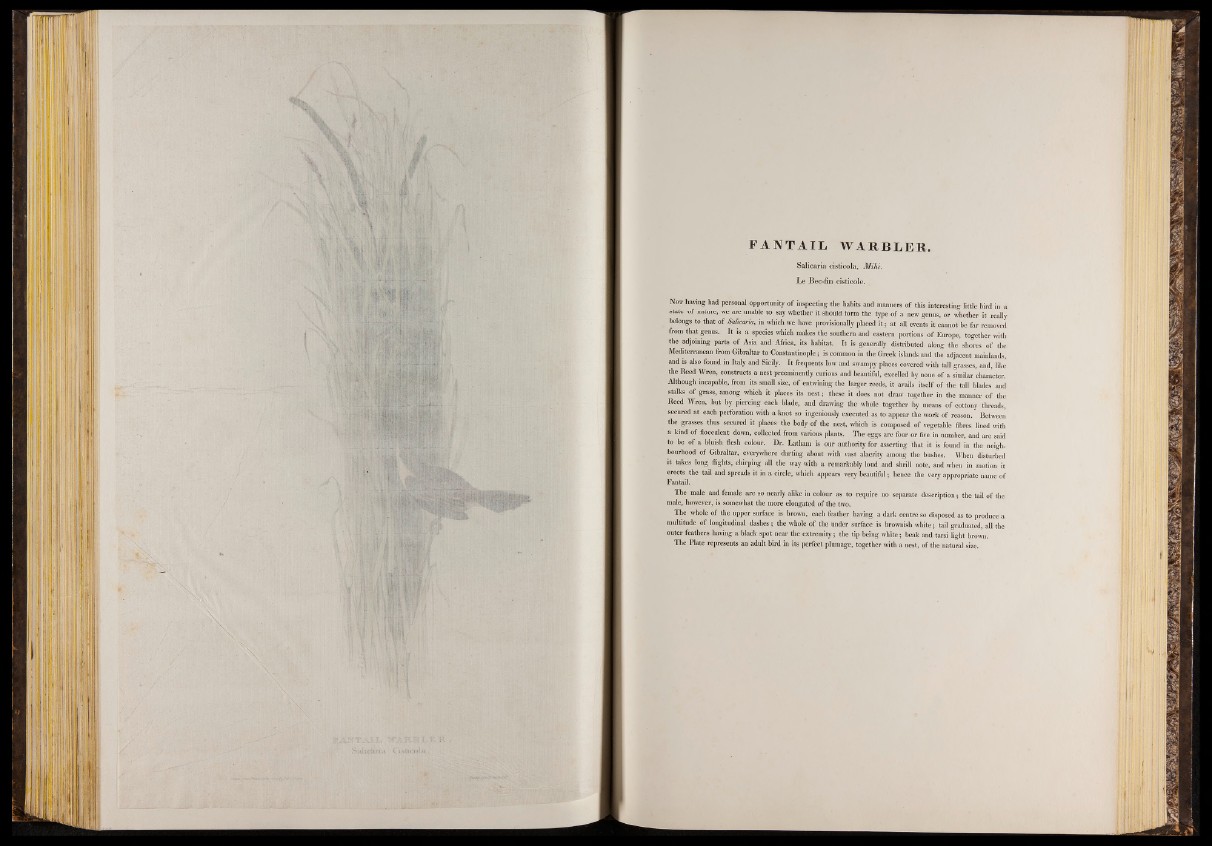
F AN T AIL WA R B L ER .
Salicaria cisticola, Mihi.
Le Bec-fin cisticole.
Not having had personal opportnnity of inspecting the habits and manners of this interesting little bird in *
state of nature, we are unable to say whether it should form the type of a new genus, or whether it really
belongs to that of Salicaria, in which we have provisionally placed it ; at all events it cannot be far removed
from that genus. It is a species which makes the southern and eastern portions Of Europe, together with
the adjoining parts of Asia and Africa, its habitat. It is generally distributed along the shores of the
Mediterranean from Gibraltar to Constantinople ; is common in the Greek islands and the adjacent mainlands,
and is also found in Italy and Sicily. It frequents low and swampy places covered with tall grasses, and, like
the Reed Wren, constructs a nest preeminently curious and beautiful, excelled by none of a similar character.
Although incapable, from its small size, of entwining the larger reeds, it avails itself of the tall blades and
stalks of grass, among which it places its nest; these it does not draw together in the manner of the
Reed Wren, but by piercing each blade, and drawing the whole together by means of cottony threads,
secured at each perforation with a knot so ingeniously executed as to appear the work of reason. Between
the grasses thus secured.it places the body of the nest, which is , composed of vegetable fibres lined with
a kind of fiocculent down, collected from various plants. The eggs are four or five in number, and are said
to be of a hlaish fiesh colour. Dr. Latham is our authority for asserting that it is found in the neighbourhood
of Gibraltar, everywhere darting about with vast alacrity among the bushes. When disturbed
it takes long flights, chirping all the way with a remarkably loud and shrill note, and when in motion it
erects the tail and spreads it in a circle, which appears very beautiful; hence the very appropriate name of
Fan tail.
The male and female are so nearly alike in colour as to require no separate description; the tail of the
male, however, is somewhat the more elongated of the two.
The whole of the upper surftce is brown, each feather having a dark centre so disposed as to produce
multitude of longitudinal dashes; the whole of the under surface is brownish white; tail graduated, all the
outer feathers having a black spot near the extremity; the tip being white; beak and.tarsi light brown.
The Plate represents an adult bird in its perfect plumage, together with a nest, of the natural size.